![]() Who:
Who: Alison Martino is a Los Angeles-based television producer, who is also a lifelong resident of the city. Martino’s affection for her hometown’s architecture led her to create
Vintage Los Angeles — a photo-centric Facebook page dedicated to highlighting L.A.’s physical transformation during the 20th Century. The focal point of that attention is the
Capitol Records building. In addition to its aesthetic value, the building also once housed the record label of Martino’s father,
Al Martino — who, aside from a long and successful singing career, is known for playing the role of “
Johnny Fontane” in
The Godfather. The film role echoed Martino’s experiences forging a singing career in the 1950s, and his run-ins with the New York mafia. His daughter went on to chronicle the seedier side of Hollywood’s star-machine, as a producer for the E! television series,
Mysteries and Scandals. The show was hosted by gossip columnist A.J. Benza, whose introductions were filmed late at night at different outdoor locations around Los Angeles, and often punctuated with his phrase, “Fame, ain’t it a bitch.” Yet the popularity of
Vintage Los Angeles (which, as of this writing, boasts over 131,000 “likes” on Facebook) derives not from photos of L.A.’s many famous celebrities, but of the city’s buildings, streets, and citizens. In addition,
VLA boasts many active comment sections for its photos and videos, which feature countless personal stories from site commenters. This engagement from Angelenos (past and present) has shaped
VLAinto something resembling a civic-minded communal photo album for the nation’s second-largest city. Such popularity has made Martino’s perspective on L.A. a hot commodity — catching the eye of
Los Angeles Magazine, which currently has her contributing one-of-a-kind stories to their blog, with a bright future at the publication.
Camera In The Sun talked to Martino about
Vintage Los Angeles, the career of Al Martino, and the importance of the Capitol Records tower as something more than just a building.
What is your take on the popularity of Vintage Los Angeles?
![]()
This is kind of a fluke. Because I had another page on Facebook for a while that was called
Mid Century Modern Historical Los Angeles. I started that like five years ago, and it was basically a tribute page to architecture around L.A. — and
Welton Becket, who created a lot of the Art Deco buildings around town, and then kind of pushed into Space Age architecture in the ’50s and ’60s. And a lot of that’s been demolished. So, really sad. I just started a page, and then everyone started contributing. Then I launched
Vintage L.A. And when Facebook launched fan pages that you could “like”, it was really good timing for
VLA. Because my other page was a group page. The “like” pages take on another life of their own. Because they have the ability for people to share all the photos. When Facebook created the “share” button, that’s when my page really took off, because these images were just so stunning. And I think being a native of L.A., I do know the areas really well, and I know what used to be there. You know, I was born in ’70. I’m old enough to see substantial changes in L.A. over the last 30 years. Since I was a small child, a lot of the places I visited are no longer here. So the page
![]()
started out almost like a tribute to
Ralph Story. He had a program on KCET called
Things That Aren’t Here Anymore. And as the page started growing, within the first couple of months,
The Huffington Post wrote
a story about it. That really helped the page take off. Then I started doing radio shows for NPR, coming on and speaking as a guest, just about L.A. And I never imagined that my career would turn out this way. I’ve been a TV producer for about 20 years, and I was fortunate enough to produce a series on E! called
Mysteries and Scandals. When I was producing
Mysteries and Scandals, a big part of our show was tracking down old photographs of L.A. to help fill the holes in the edit bay, and trying to illustrate what the city looked like back then. And I was fortunate enough to build relationships with photo houses, and photographers, and archive houses that supplied a lot of those photos. [For
VLAphotos,] a lot of them are in the public domain. A lot of them I get from Google. A lot of them I scan out of my personal collection of books. I always try to credit all the photos when I can. A lot of them are postcards from back in the day that I’ve collected. I’ve got about 10,000. And then, through the magic of that page, what you don’t see happening on there are all my private inboxes I get on a daily basis. There’s hundreds, and people are always submitting photos. It’s an endless supply. I couldn’t post all of them in one lifetime.
![]()
I don’t really have a sorting approach. Lately, with Instagram and the new iPhones, all this technology has really helped the page. Because I’ve been photographing the city as well. So I recently put up a couple of our monuments,
Johnie’s Coffee Shop and the old
May Company building on Fairfax and Wilshire. They’re still standing, and they get as many likes as a building that isn’t here anymore. So I’ve really started to embrace what’s still in L.A., because I’m never leaving. I’m a
![]()
native here, born and raised. I celebrate this city. I don’t want anyone to think the city has nothing to offer. And in the infancy of the page, it was everything that
isn’t here. But I didn’t want everyone getting depressed. And it’s given me a different outlook on L.A., curating this page. Because now I notice things on street corners I wouldn’t have noticed 10 years ago — wouldn’t even have given a second look at. I really appreciate what’s still with us. And I’m not trying to change people’s mindsets. I certainly hope developers, when they tear down some of these buildings, will look at things in a different perspective. You know, take a building that has been sitting empty for a while, and re-purpose it into something else. Sunset Strip is one of the major streets in L.A. that
really changed. Yet there’s sections of it that look exactly the same. So I do a lot of comparisons, and show how a street looked in like 1938, and
what it looks like now. And you’d be surprised how much is still here.
What’s special to you about the Capitol Records building?
For me it’s personal. It’s my dad’s label. I probably wouldn’t even have been born in Los Angeles if my dad wasn’t on that label. Because he was an East Coast guy. He moved here in 1968 permanently because of Capitol Records. He wanted to be closer to his label. And so for me, growing up, it was
![]()
always our go-to place. My dad used to use the mail room there. He took a lot of lunches with his friends. He was involved in the marketing department, and he would see a lot of recording artists there. But for me it was personal. We used to walk down the street to go to the burger joint on the corner, and go to
Wallichs Music City and go record shopping after. It was really a destination place to go. When I think of Hollywood today… I mean, the
Chinese Theatre is still there. It looks beautiful. They just refurbished it, put it back in beautiful shape. But to me, when I think of Hollywood, I think of the Capitol Records building. I think of Welton Becket, our most-premiere architect. It just holds the test of time. People are fascinated by it. I put up a
photo of it being built in 1955, and it’s one of my highest posts. So it’s really learning what my followers want to see too. And they can’t get enough of that building. You know, my page is not so much a love letter to movie stars. It’s more of a love letter to the residents and the people who have lived here. So I try not to do too many movie star posts. Because there are so many Hollywood movie page tributes. I always mention if someone has
![]()
passed away. It’s something I like to do. But it’s more about documenting stories from people that have lived in L.A. I guess what I love about the page is that it’s an online library. Of all the books I have — and I must have about 500 books on L.A. from the past — I still learn more from
Vintage L.A. Because the social media and Facebook people feel compelled to tell a personal story that they have about a building I put up. If it’s an old coffee shop, there will be somebody that says in the thread, “I met my wife there.” Or if I put an
ice cream parlor up, “My father was the one that designed the Sunset Plaza.” It’s amazing what’s generating off those pictures. There’s not just, “Oh, look how cool that is.” It’s “I had that exact car.” I mean, I put up a photo of the Wilshire theater in 1979. There was a man walking down the street. A guy inboxed me that he was the one in the photo. So it’s stuff like that. He never would have imagined seeing a picture of himself on Facebook walking down the street when he was like 19. Now he’s asked me for a print of it, and I’m gonna blow it up for him, so he can put it in his office. That’s what makes me the most delighted — when people recognize themselves in photos. I put up a picture last year of
Pandora’s Box, the famous club that was demolished.
![]()
In the late ’60s, it was a go-to place for teenagers, and a hang-out. It was kind of like a hippy haven. I got a rare photo of that, put that up. So there was somebody in that photo that flipped out, “That’s me! That’s me!” Every post has something like that. “I used to have that car”, “I worked in that office building”, “I met my wife there”, “My father designed the building.” Even some of Welton Becket’s grandchildren have come on and contributed. Mama Cass’ daughter writes in sometimes when I put up stuff about
The Mamas & the Papas. Because I do lots of tributes to Laurel Canyon. It’s very hard to cover the entire city. But I try my best to keep it from
Santa Monica to downtown.
![]()
I try to do pockets of
Long Beach, pockets of
Malibu. Sometimes I’ll go out to Orange County. But it’s really L.A., because L.A has changed so much. When I say there’s still stuff here, you have to look just a little harder. A message I’m trying to get across through
Vintage L.A. is — even the apartment you live in, there’s something unique about it. Because so many of the old Art Deco apartments are being torn down for condos, they’re starting to look all the same. On Sunset especially, we’re losing a lot of iconic one-story buildings that have been around since the ’30s, for mega-complexes
![]()
that are going to be 14-15 stories high. That architecture is so different from what we’re used to, and the way we see L.A. is going to be changing in the next few years. I’m not for the Millennium project. I’m sorry, I’m just not for it. I think they’re too big. They’re too tall. I don’t like the way it’s going to change the Hollywood skyline. I mean, sandwiched right between them is the Capitol Records building, which is going to dwarf it. You know, it’s not going to be as glorious as when it stood on its own, like that.
I have a lot of people on the page that are in their 80s, believe it or not. People that have just learned how to work that Facebook, because of
Vintage L.A. They want to relive their feelings. And there hasn’t been a lot of “Well, when [the Capitol Records building] went up, and the modernism took over L.A., and all the old beautiful Art Deco buildings were demolished for the Space Age look…” I’m sure it was shocking for them to see the Hollywood Hotel get demolished for a bank building that was just pretty much a box. I think that was upsetting. From what I’ve read, and the research I’ve done, the Capitol Records building was definitely not an outrage. It was astonishing to look at that go up. My dad was on Capitol Records at the time, and he and the recording artists would go down to Hollywood and Vine, and
watch it being built every day. And they were just flabbergasted by how unique it was. So I don’t think its the same feeling we’re getting with the Millennium project.
Of the L.A. architecture no longer standing, what do you feel was the greatest loss?
![]()
There are several that stand out to me that were taken away from us. I’m very upset about the
ABC Entertainment Center in Century City that was demolished for an office building. It was absolutely stunning. That was demolished about 10 years ago for a new CAA office. It’s just a big glass block. There was a movie theater in there, and there was a theater in there, and it was a community place. Now it’s just an office building that doesn’t really serve a purpose for anyone, unless they work in the office. So I was really upset to lose that one. But looking back on all of the pictures I’ve posted, like the
NBC radio building on Sunset and Vine, that should have been
preserved. That almost looked like something you’d see in New York City, like the Chrysler Building. It’s sad to see the Art Deco go. Wilshire Boulevard, the
Miracle Mile, the old Coulter’s Department Store was taken away. Thank god the
May Company building is still there, and going to be turned it into a museum, as part of
LACMA now. I could go on and on about what’s not still here.
Sunset and Vine, that whole block was demolished around 1980. There’s nothing original there, and there’s nothing original on the other side. Home Savings replaced the NBC building, and that’s now Washington Mutual.
Wallichs Music City, the premiere music store before Tower Records came around, that was demolished in the ’80s, and it’s now a Walgreens.
![]()
You know, Starbucks has taken center stage. That’s why I have the Capitol Records building as the main icon photo. Because it’s still here, and it’s still as glorious as ever. That’s why I was not for those Millennium buildings. Obviously, for traffic reasons as well. I mean, have you driven down Hollywood Boulevard on a Friday night? The 101 is right there, and I have friends that live over in that area, and they just can’t imagine those buildings getting erected. Yes, it gives people jobs and housing and all of that. But they demolished a big portion of old Hollywood buildings to build the W Hotel, and I don’t think it’s doing as well as they expected. And there’s condos in there that are still sitting empty. So I say, if you’re going to build big huge skyscrapers like that, just keep building them downtown.
![]()
Downtown has never looked better. They did a beautiful makeover on City Hall. It’s luminous. It’s gorgeous, the way the lights are hitting it. There’s a whole resurgence of restaurants down there. When the Staples Center moved down there, I think a lot of people started flocking for the sports events. Then they started building really hip cool restaurants, and it became a destination for a lot of young people. When I was growing up, Silver Lake was kind of the place to hang out in. Now I go downtown, and I just see so many people dressed up, and walking around.
![]()
They’re checking out the Biltmore Hotel, which is so beautiful and has been restored. Union Station is classic, classic vintage L.A. And Olvera Street, right across the way, is just as popular as it’s ever been. So I’m pushing people to go downtown.
As far as movies go, I see film crews all over downtown now. 10 years ago, you could shoot a canon down the street, and not hit a person. It really has changed. The Grand Central Market down there is resurgent. Now everybody’s getting their produce down there, and I see film crews everywhere. I used to see them all up and down the Sunset Strip. Now I see them moving downtown. Because the Sunset Strip, now I call it “
Sunset Stripped.” It looks more like Las Vegas Boulevard than it does the Sunset Strip anymore. Whereas, I know downtown is embracing their cultural heritage, and they’re refurbishing everything. It just looks glorious. It looks like downtown should look. Nobody ever went to downtown L.A. When tourists came to L.A., they’d go, “Let’s go downtown.” And people would say, “Oh no. Downtown, there’s nothing there.” It’s not like a downtown Chicago, or a downtown New York. There was nothing there. Now everybody’s not only heading down there, but they’re moving down there. And the lofts are incredible. A lot of them are highrises. But they’re old buildings. People now want to live in the old historic buildings. But I think the Staples Center really helped the resurgence of downtown.
Has your producing work crossed over with VLA?
![]()
I freelance TV work. So this past year, I got to produce two episodes of a local show out here called
Eye on L.A. I was really excited when they called, and they did a half-hour on
Vintage L.A. They asked me to come up with some places that are still here, because we want people to go and visit.
Canter’s Deli is one of my favorite places. It’s quintessential kitsch inside. Nothing has changed since the ’60s, and they’re open 24 hours. That’s more in the Fairfax district. There’s another restaurant I love out here in West Hollywood,
Dan Tana‘s, which has been open since 1965.
We did an episode called “Secret L.A.”, and it was an episode on offbeat homes. There’s one house I love covering, which is the
Stahl House. It’s actually above the Sunset Strip, just above the Chateau Marmont. I post about that quite a bit. Because you can take tours of it, and you can go up. It’s a mid-century modern masterpiece. Luckily, it’s still in the family. I just encourage people to discover their own L.A. Because you can’t run a page that doesn’t provide what’s still around. I think the page has definitely helped people see L.A. a little differently. Maybe in a way that they remember it, and this page helps spark their memories. And that’s why those comments, they’re gold.
What are your thoughts on Thom Andersen’s Los Angeles Plays Itself?
![]()
I worship that movie. I love locations. I love that movie, because it shows where everything was filmed. I try to keep
VLA very fresh. I try not to post the obvious posts, the obvious music, the obvious buildings. I try to think outside the box a little bit. Of course, I get amazing submissions from people. Some of those photos have never been published, or seen before. I get most excited about that.
Los Angeles Plays Itself, I love the movies [
Thom Andersen] chose to put in there. Some of them were obscure. And as film buffs, we dig that stuff. Yeah, we know where
L.A. Confidential was shot. But I like some of the more obscure films. Especially the films from the ’70s. Because some of that stuff is still there. You can post a photo from 1935, and everybody will go, “Ooh! Ahh! That’s unbelievable.” But when you post a photo from 1975, you’re actually gonna get people that lived during that time. So they have more of an emotional connection to it. You know, one time I posted something from 1921. Well, there’s nobody still here from 1921. So they’re looking at it, and it’s almost like another universe for them. When I post something from the ’60s, it usually gets the most reactions. Because most of my followers on my page lived that era. So they’re able to tell firsthand stories about what I’m posting.
I referred a lot of people to
Los Angeles Plays Itself. Because to me, it’s like
Vintage L.A. on film. It’s exploring locations. Some of them are still here. The movie’s inspired me. Eventually, I plan on doing
![]()
my own
Vintage L.A.documentary. But I’m plucking my stories right from the pages of
VLA. Because those stories that are coming out of there need to be preserved. And I think film is the best way to do it. The only sad thing about the Facebook page — and maybe they’ll change it in the future — is you can’t really search for an old post. So if somebody remembers a post from last year, it’s very hard to go back on the page and find it. You know, there are stories that are there, but they’re buried. I’ve had the page three years now.
There’s a couple of videos I have from the Sunset Strip. One is a beautiful 16-millimeter color of a camera just rolling down the Strip. I believe that was for
The Mod Squad, but it was never used. It was scrapped. Those end up in different footage houses, and I started licensing that footage for my shows back [in the '90s]. Now, because of the internet and YouTube, those clips have leaked out. They’ve just gone viral. I’m not the only channel that has those clips. They are time capsules. I add music to them, and some people have even gone as far as putting the street names at the bottom when they’re editing them. Hopefully it’s helping the footage houses, because I always indicate where these clips are from. I don’t own them. But with YouTube, it’s a great way to get them seen. And I’ve seen a lot of those clips now being used in different TV programs and documentaries. Lifetime just did a fabulous documentary about Cher and her mother [
Dear Mom, Love Cher], and I saw some of the clips I had posted. So now the producers are really good friends of mine. And they’re like, “Well, we originally saw those clips on
Vintage L.A.”
![]()
Because of
VLA, they contacted
The Getty, and a wonderful stock footage house in North Hollywood called
Producers Library, and got the footage. Some people don’t know where to look for that stuff. So that’s been a plus.
There’s one footage house that has reels of this stuff, and they don’t know what it is. So I took a stab at it. I went into their library, took them down and said, “OK, that’s Sunset. That’s Santa Monica. That’s La Brea.” They just had it titled as “Los Angeles 1965.” But if you get more specific with the street names, and you see where everything is, then when people really
do need those streets for documentaries, they can find it on
VLA. Because I try to put as much of a description on those clips as I can of what we’re looking at. Not just “Hollywood 1965.” It’s “La Brea, between 3rd and Beverly.”
I’m seeing on YouTube a whole plethora of new videos from L.A. that are being posted everyday. A lot of them are just simple home movies. And I’m always encouragingVLA members to go through their photo albums, and post photos, and post footage, and transfer your home movies. You’d be surprised how one piece of footage can touch the lives of hundreds of people. It’s only a memory to them. And then when you see it, it’s not a memory anymore. It’s actually almost validating what you’ve been trying to describe all those years to people that maybe moved here 10 years ago, and don’t see L.A. like we saw it 20 or 30 years ago. I think that’s the power of that page. The contributions, and what people say, what people write, what people post, what people share. I really try to be as interactive with 120,000 people as I can each day, and not keep it generic. I’ve also been very lucky to have a very active and kind group of people on that page. It doesn’t seem to generate too many arguments. I stay away from sports because of that. Because as passionate as people are about sports, some fights have broken out. So I just said, “No more sports.” Not forever. I sprinkle it in, but it’s not an everyday post. I just want the conversations to be civil and communicative.
![]()
That was our bible. I produced a show called
Beverly Hills Babylon for
Mysteries and Scandals. So it was definitely a
Babylon-style show. We just got really lucky with that show. The timing was great, our host was just perfect, and we were shooting on the Boulevard. See, we shot every show on the Boulevard, and we had
A.J. Benza come out of a dark alley with a smoke machine. It was supposed to play like this guy telling you these tales in a dark alley on the streets of Hollywood. But back then, permits were
really easy to get. Very cheap.
Nobody was on the streets of Hollywood past 11 O’clock at night. So we would start shooting sometimes at midnight, until about 4 in the morning. And there was
nobody. Not even a car would drive by. Today, you couldn’t even shoot there at 4 in the morning. It’s just people
everywhere. The permits have gotten a lot harder to get. When
Johnny Grant was around Hollywood, he used to help us shoot out there. He loved our show, was a big supporter of it, and we interviewed him a bunch of times. We interviewed
A.C. Lyles over at Paramount. You know, of the people we interviewed for that show, I’d say 80% of them have passed away.
The show was created by
Michael Danahy. He was a producer at the network when I started there in 1996. He pitched that show to E! And I, believe it or not, was a 26 year-old receptionist for E!. I’ve always had a love for L.A. history and, through my father, was from a showbiz background, and knew a lot of the old-timers. [Danahy] came down and said, “A little birdie told me you know a lot about ‘Old Hollywood.’ We’ve created a show called
Mysteries and Scandals.” So he hired me, and we only thought we were gonna do 10 or 15 episodes. But I was there almost five years. We had a
![]()
huge production team, and we did over 150 episodes. And the show got so popular, that they parodied A.J. on
Saturday Night Live. That’s when I knew we had something good. In the beginning, it was hard to get stars to come on and do it. But by the end, we got Janet Leigh, Martin Landau, Dennis Hopper, Rod Steiger, Steve Allen. You’d end up spending 45 minutes to an hour with these amazing icons, and would never have thought Hollywood had changed that drastically. Luckily,
Mysteries and Scandals documented their stories. I think when
Jack Lemmon walked through the door, I about fainted. I mean, they
wanted to do the show. They really wanted to be a part of that show. At first, we thought it was gonna be a little too scandalous to get the big, big stars. But once they saw the episodes, and that they were done with integrity… Yes, they were done in a little bit of a tongue-in-cheek
Hollywood Babylon style. But it gave the show some punch. It was only a half-an-hour show — which on TV is only 22 minutes. So they moved really fast, and we were able to produce
a lot of them in a short amount of time. Six weeks for each show.
![]()
I have two favorites. My father, the singer Al Martino, got his start because the singer
Mario Lanza gave him a song that Mario thought would be perfect as my dad’s first hit. It’s called “
Here in My Heart.” So Mario’s a big part of why my Dad went out to L.A. And when I started the show, I saw the list of names that we were gonna do, and Mario Lanza was on that list. I begged Michael to let me do that particular show, because there were other producers that wanted to do it. But once I told him my father was basically godfather to the Lanza kids, I was able to produce that show. I got to interview one of the Lanza sons, and interview my dad.
That was really amazing. Then we shot at
Holy Cross Cemetery, where Mario Lanza is buried. Again, today this could
never happen. I don’t believe they’d ever allow a film crew on a cemetery lot. Maybe in
Hollywood Forever Cemetery, because they have events there now. But 15 years ago, you’d walk through the cemeteries, and there was nobody there. It was sacred ground. So imagine a film crew coming in with a smoke machine. Anyway, that’s a very special show to me. And when my dad passed away, we had never gotten plots for the family. So the first place I thought of was putting him there. It had everything to do with my producing that show. It was a meant-to-be kind of situation. Now he’s where Mario Lanza is buried.
My second favorite one is a story I did on Paul Lynde from Hollywood Squares. That was a big one. Because we did “The Golden Age”, mostly. And then when we got to about 140 episodes, we started moving into the ’70s. I wanted to do Paul, because he was such an outrageous character. Not so much scandalous. But he’s got his own story. And I was able to interview Peter Marshall, Phyllis Diller, Charlotte Rae — they all came to my aid, and gave me Hollywood Squares footage, and outtakes, and photos. I spent a whole evening with Phyllis Diller at her house. Those were the days. It was such an amazing experience just producing that whole show, every episode. I miss it so much, and I think VLA is the closest thing I have to that. I’m able to share those stories, and share those shows, so they’re not totally forgotten.
A third favorite is Beverly Hills Babylon. Because I grew up in Beverly Hills, and it was the first show we did on a city. We usually did people. But I thought, “Hey, we could move this into doing shows about cities.” And that’s kind of where the show was headed. But then, unfortunately, a new regime and president came into E!, post 9/11. They canceled basically every show on the network, including ours, and then canned us all.
What are your favorite movies set in Los Angeles?
I’m a big ’70s film girl. So I love the
Blake Edwards movies. I love the movie,
10. I think that really captured Beverly Hills and Malibu
perfectly in 1979.
American Gigolo is another great one. I love
The Loved One from 1965. That captured more of an offbeat Los Angeles. There’s a movie that I worship called
Model Shop, that came out in 1969, and shows oil wells pumping in West Hollywood.
![]()
And I remember that really well as a kid. I remember seeing oil wells on La Cienega. You won’t see that today. There’s another movie called
A Guide for the Married Man that shows an amusement park called
Kiddieland that was around. There was
Century City mall. That’s still here. They filmed there in the ’60s, and it was the way I remembered it. Because, again, that’s gone through a huge makeover. I don’t even recognize it anymore. I could name so many movies. That’s why I love
Los Angeles Plays Itself. I learned a lot from that film. Even
Swingers, from almost 20 years ago, really captured an L.A. I was in my 20s when that came out. That was the era when lounges were really popular in L.A. The Dresden was really popular, and the Lava Lounge was really popular. When Tarantino put out
Pulp Fiction, the surf music craze started up again. And that’s why I started going to some of those lounges around L.A. To hear surf music.
What was your father’s L.A. experience like?
![]()
When he first got signed to Capitol, he was living in L.A. in 1952 with
Eddie Fisher and with
Nicky Blair. [Blair] opened a restaurant on Sunset a few years later, and was kind of a famous restauranteur. They lived in a building on Orchid Avenue that’s still there, which I can’t believe. I think they paid $5-a-month each. But that’s before the Capitol Records building. Capitol used to be on Melrose. Then he moved back to New York, and then moved back to L.A. in 1968 when he married my mother, and they moved to Beverly Hills. And Beverly Hills was not like it is today. It was just another part of L.A. Rodeo Drive — there was no Gucci, and there were none of those big-labeled stores. It was a little village. He was thinking about either buying a house in Beverly Hills or Hollywood. He was kind of going back and forth. Because he wanted to be near the Capitol tower. And Sunset Boulevard was such a easy way to get around. So he ended up moving near Sunset by
The Beverly Hills Hotel. He had lived in The Beverly Hills Hotel for a little while in the ’50s also, so he knew that area pretty well.
![]()
My dad loved Los Angeles, and he was a big foodie. My dad hung out with
a lot of restaurant guys. His go-to restaurants were Nicky Blair’s, Ah Fong’s, Mateo’s in Westwood, Marino’s, Martoni’s in Hollywood — which was really big for the music industry, with the people that went there. Because it was right by Capitol Records. Everybody knew everybody. Everyone knew the same agents, and knew the same managers. There weren’t that many labels back then. So everybody knew everyone that worked at all the record labels. Today there’s a million record labels. So you don’t really get to know as many people as you did back then. It was a real community. He loved L.A. He had a house in Philadelphia, but he spent most of his time in Los Angeles, and was with Capitol Records until the very end.
He got
The Godfather, because around 1971 the
Godfather script was going around Hollywood. And my dad… he’s a whole another story. There’s a video on YouTube called “
Al Martino Hard Copy“, and you can learn what my dad went through. Because he went through a lot with the mob in his early career. He had to leave for England, and leave for seven years, and they threatened to kill him. Actually, when he went to England, it was the best thing that ever happened to him. Because he charted #1. And it was the first
![]()
British chart ever charted, and he’s in
The Guinness Book of World Records for that. And then when he came back to America,
Dick Clark and
Alan Freed really helped put his music back on the radio in the United States. He got back in the music business in L.A. pretty quickly when he got back to Los Angeles. Then when the
Godfather script was going around, my dad was very close to Phyllis McGuire from
The McGuire Sisters — and she was dating
Sam Giancana. My dad knew Sam, and they came to my dad’s house, and they said, “There’s a script, and it’s
so you. You have to play this part of ‘Johnny Fontane’. It’s so much a part of what you already went through in your life.” And he really fought to get it. He really did. He took meetings with
Bob Evans. He was the first one cast for that film. I don’t even think
Francis Coppola had been signed on yet.
Anthony Quinn was supposed to play
Marlon Brando‘s part. And my dad was close with Anthony, so they thought they were going to be working together. But believe me, it worked out, because of the scene with my dad and Marlon. The one scene they seem to show every time they show a clip from the film, they always show
that clip. Because it’s the one scene where Marlon says, “I’ll make him an offer he can’t refuse.”
![]()
Photo taken in the hallway of Capitol Records. The famous studio A is directly behind me. It was so thrilling to walk these hallways again. My father recorded every single record in this building during the '60's - '90's. Such powerful feelings come over me standing here. I think my earliest memory as a child is listening to my dad record here. I hope the studio stays intact for eternity. Hoping for the best...
Click
here to read the original Camera in The Sun blog.
Alison Martino is a writer, television producer and personality, and L.A. pop culture historian. She founded the Facebook page Vintage Los Angeles in 2010. In addition to CityThink and VLA, Martino muses on L.A’s. past and present on Twitter and Instagram and on her website, alisonmartino.com












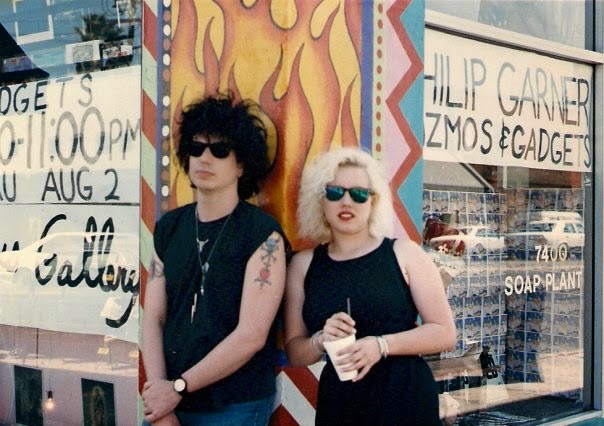


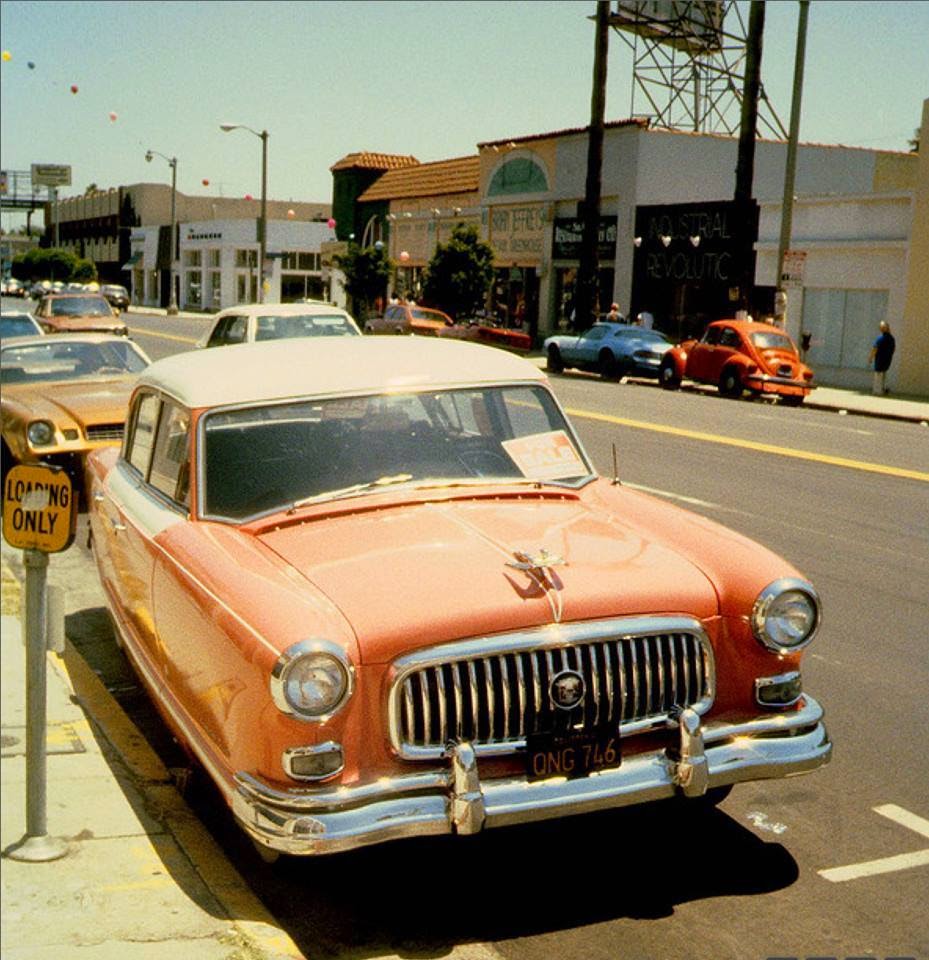
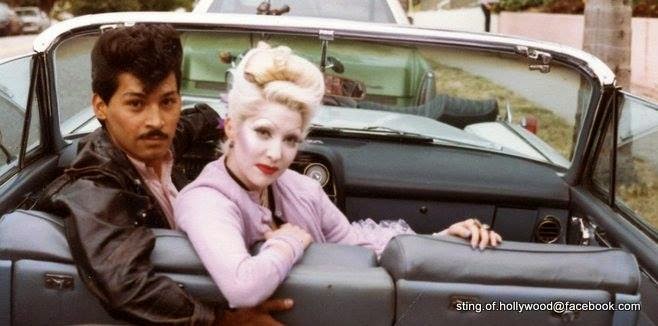












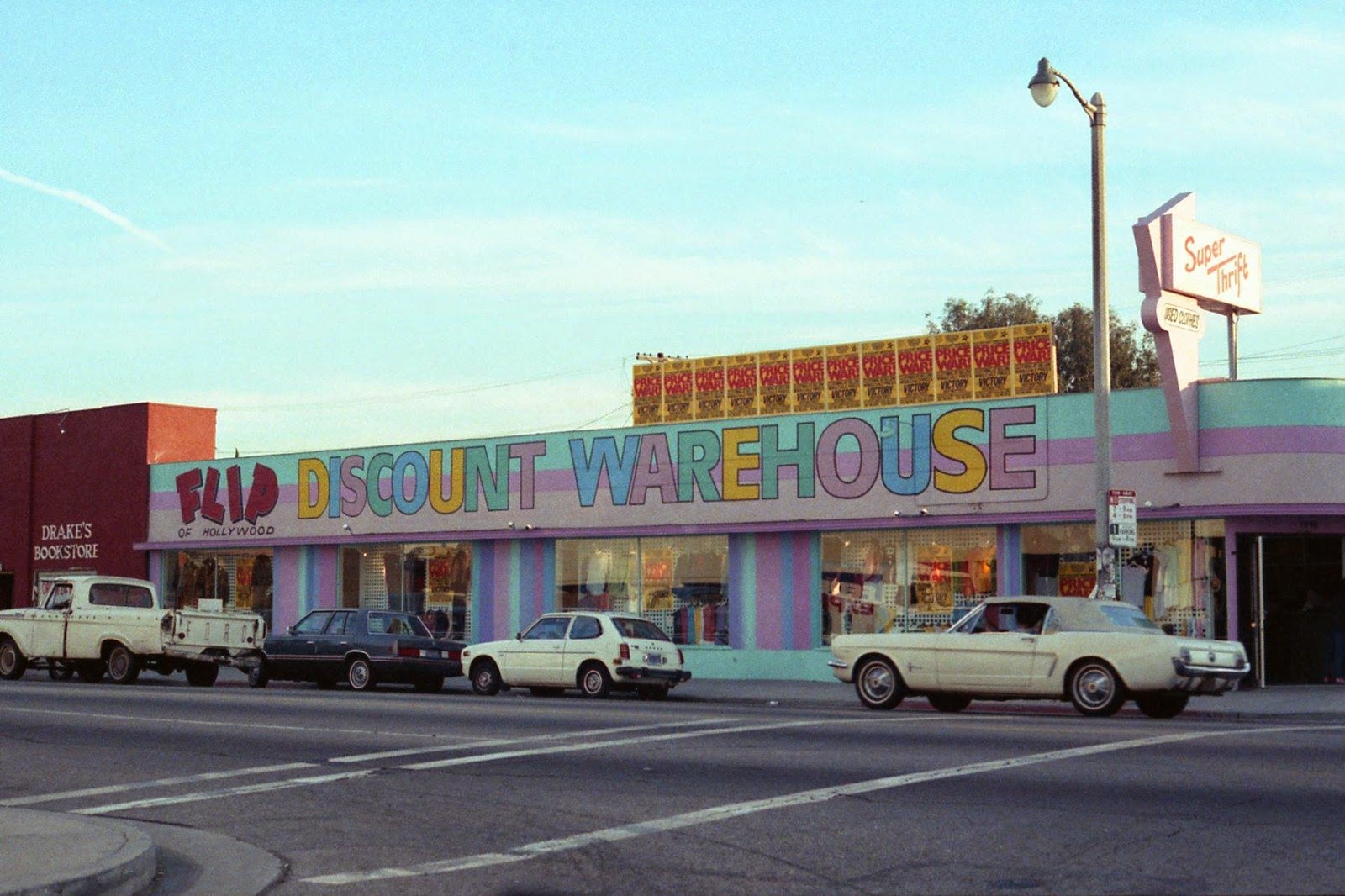






































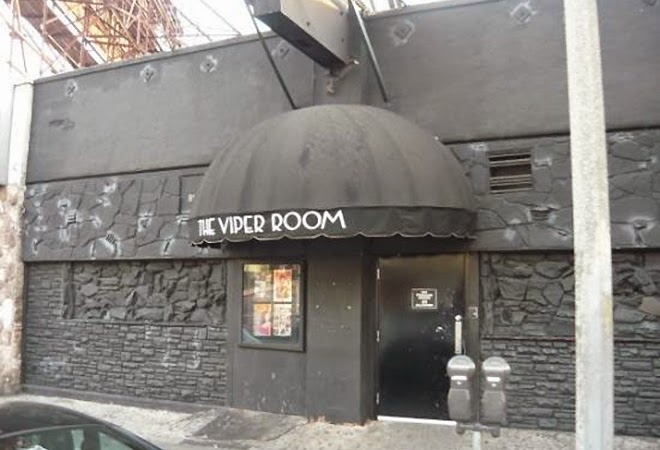











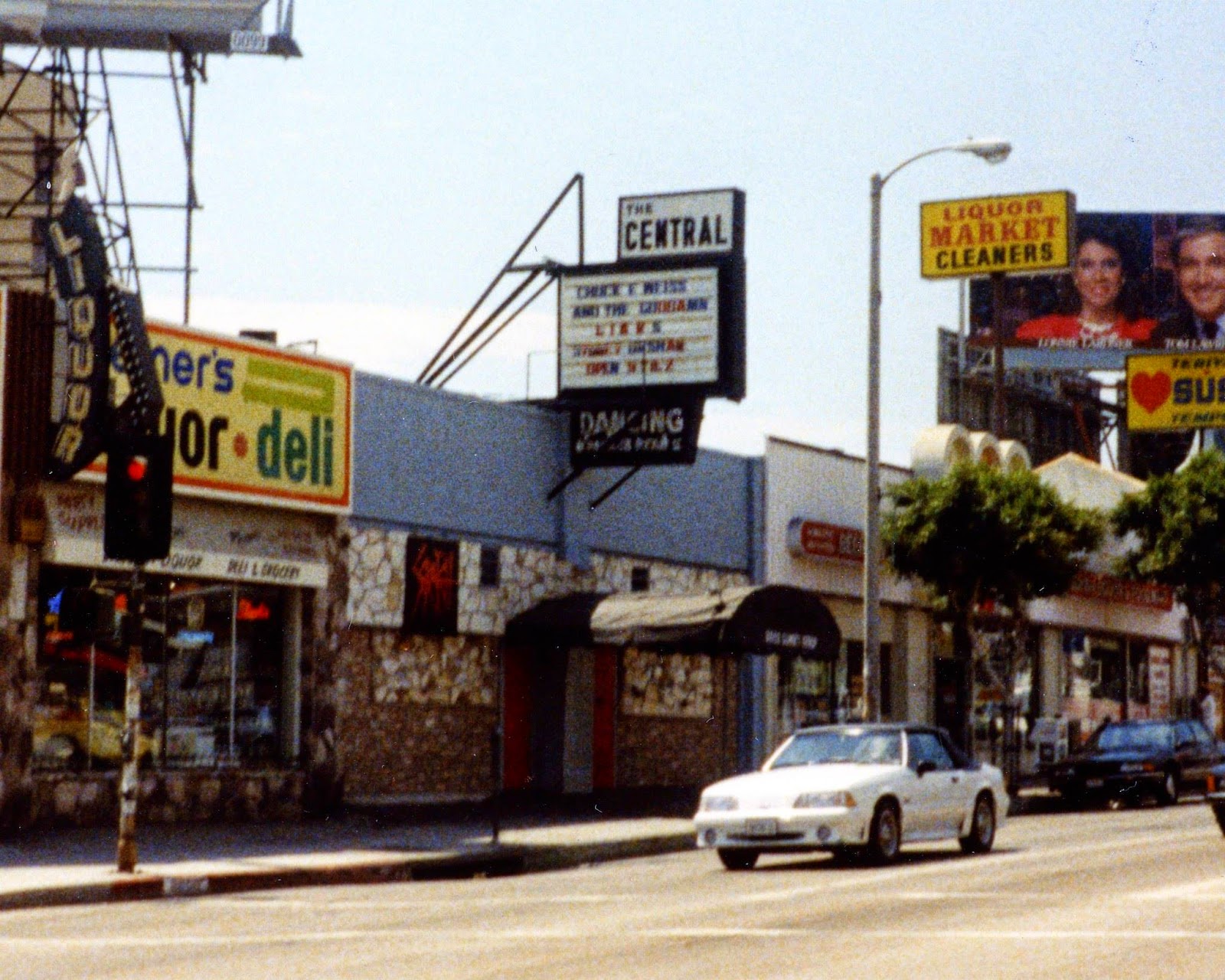





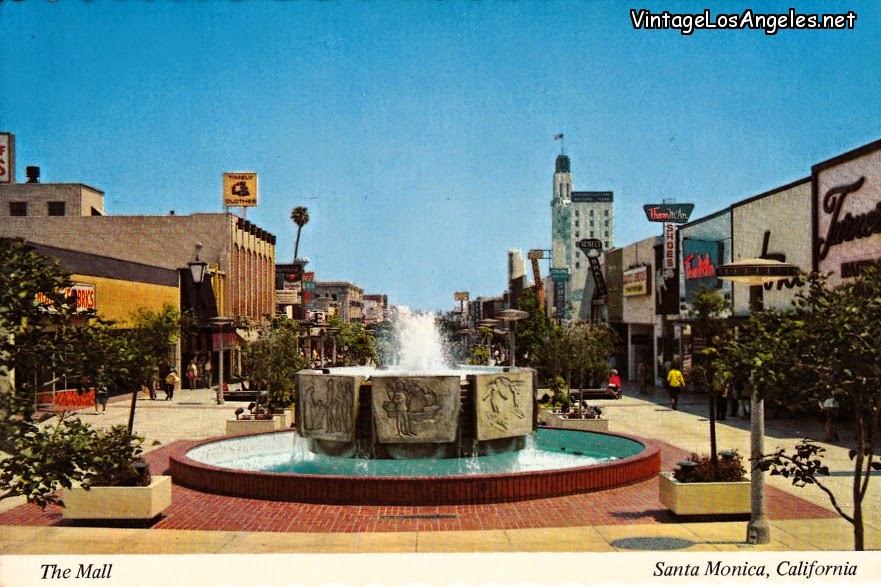












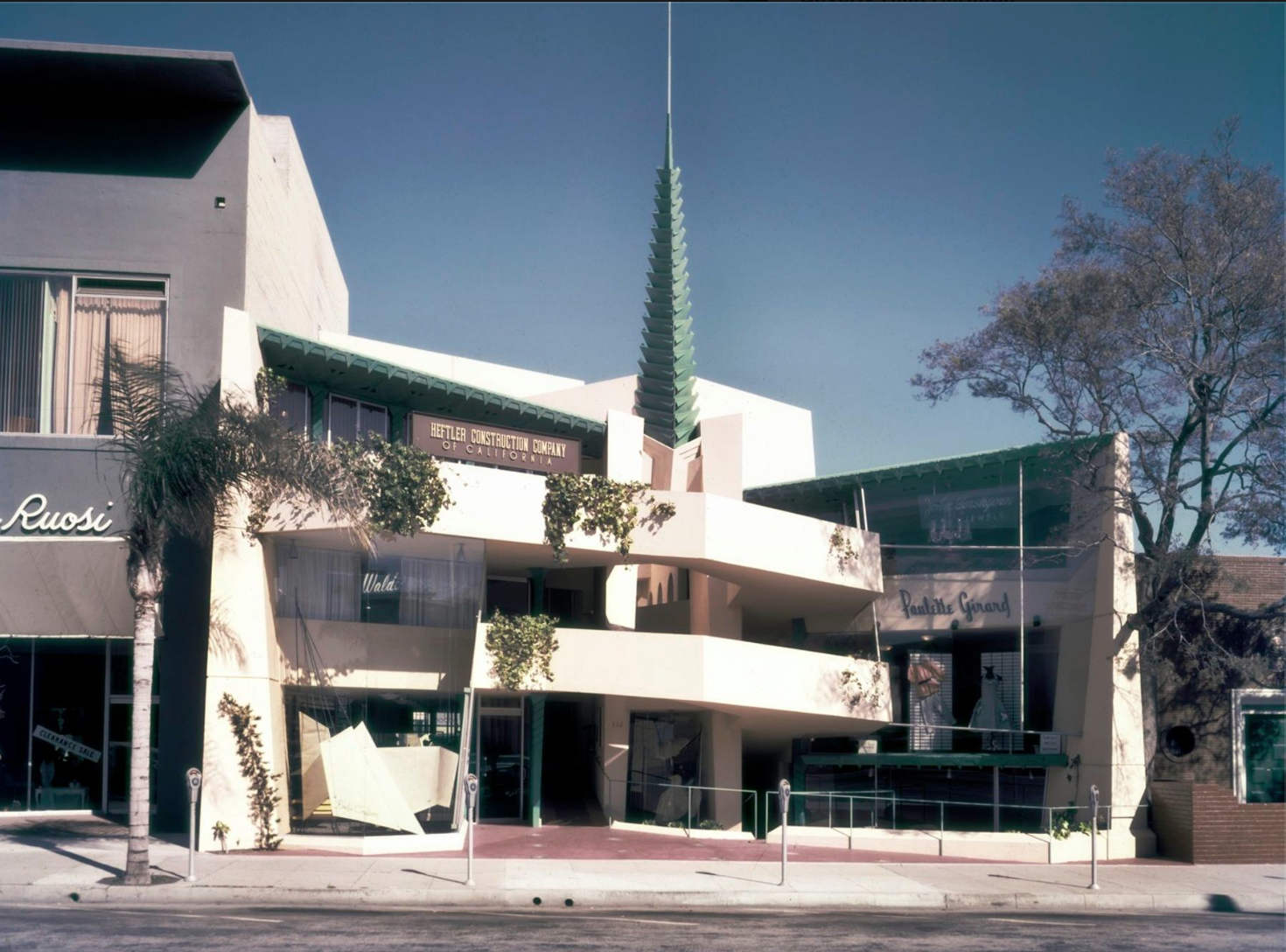


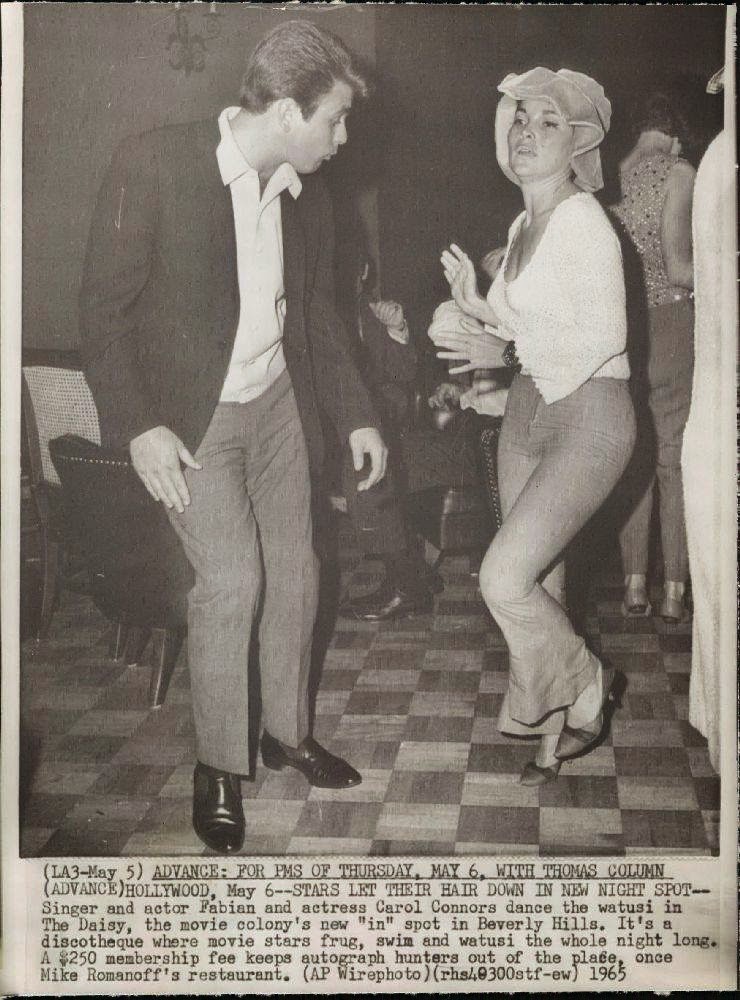












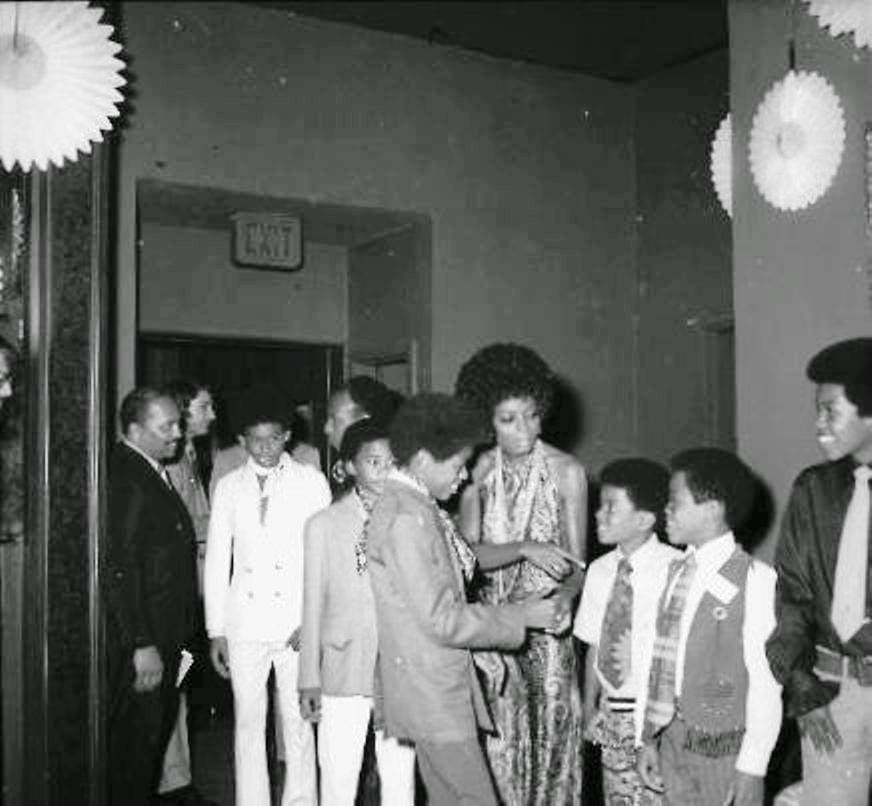
















































































































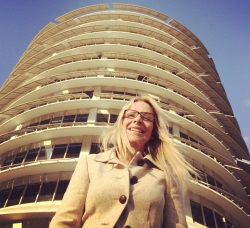 Who: Alison Martino is a Los Angeles-based television producer, who is also a lifelong resident of the city. Martino’s affection for her hometown’s architecture led her to create
Who: Alison Martino is a Los Angeles-based television producer, who is also a lifelong resident of the city. Martino’s affection for her hometown’s architecture led her to create  This is kind of a fluke. Because I had another page on Facebook for a while that was called Mid Century Modern Historical Los Angeles. I started that like five years ago, and it was basically a tribute page to architecture around L.A. — and
This is kind of a fluke. Because I had another page on Facebook for a while that was called Mid Century Modern Historical Los Angeles. I started that like five years ago, and it was basically a tribute page to architecture around L.A. — and 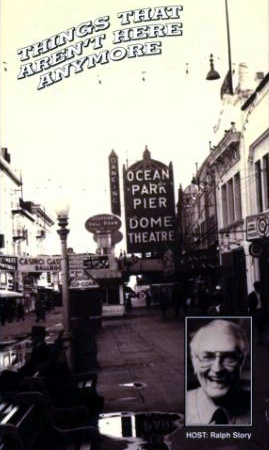 started out almost like a tribute to
started out almost like a tribute to 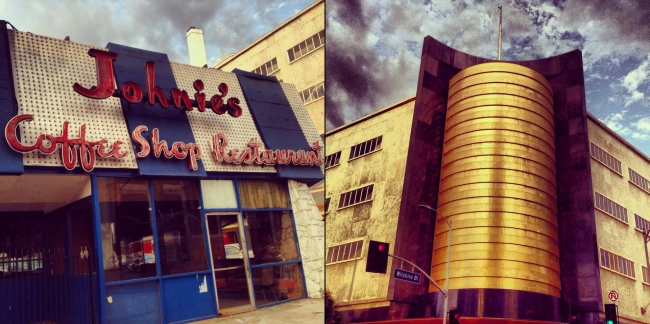
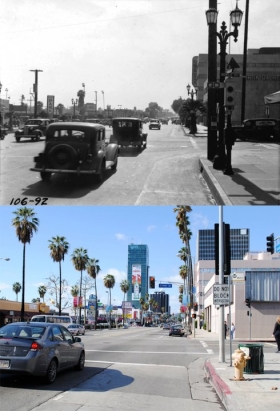 native here, born and raised. I celebrate this city. I don’t want anyone to think the city has nothing to offer. And in the infancy of the page, it was everything that isn’t here. But I didn’t want everyone getting depressed. And it’s given me a different outlook on L.A., curating this page. Because now I notice things on street corners I wouldn’t have noticed 10 years ago — wouldn’t even have given a second look at. I really appreciate what’s still with us. And I’m not trying to change people’s mindsets. I certainly hope developers, when they tear down some of these buildings, will look at things in a different perspective. You know, take a building that has been sitting empty for a while, and re-purpose it into something else. Sunset Strip is one of the major streets in L.A. that really changed. Yet there’s sections of it that look exactly the same. So I do a lot of comparisons, and show how a street looked in like 1938, and
native here, born and raised. I celebrate this city. I don’t want anyone to think the city has nothing to offer. And in the infancy of the page, it was everything that isn’t here. But I didn’t want everyone getting depressed. And it’s given me a different outlook on L.A., curating this page. Because now I notice things on street corners I wouldn’t have noticed 10 years ago — wouldn’t even have given a second look at. I really appreciate what’s still with us. And I’m not trying to change people’s mindsets. I certainly hope developers, when they tear down some of these buildings, will look at things in a different perspective. You know, take a building that has been sitting empty for a while, and re-purpose it into something else. Sunset Strip is one of the major streets in L.A. that really changed. Yet there’s sections of it that look exactly the same. So I do a lot of comparisons, and show how a street looked in like 1938, and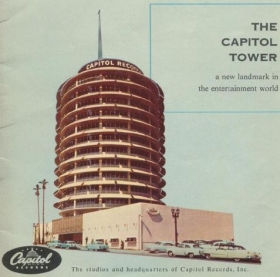 always our go-to place. My dad used to use the mail room there. He took a lot of lunches with his friends. He was involved in the marketing department, and he would see a lot of recording artists there. But for me it was personal. We used to walk down the street to go to the burger joint on the corner, and go to
always our go-to place. My dad used to use the mail room there. He took a lot of lunches with his friends. He was involved in the marketing department, and he would see a lot of recording artists there. But for me it was personal. We used to walk down the street to go to the burger joint on the corner, and go to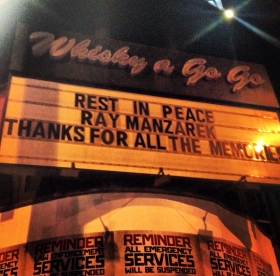 passed away. It’s something I like to do. But it’s more about documenting stories from people that have lived in L.A. I guess what I love about the page is that it’s an online library. Of all the books I have — and I must have about 500 books on L.A. from the past — I still learn more from Vintage L.A. Because the social media and Facebook people feel compelled to tell a personal story that they have about a building I put up. If it’s an old coffee shop, there will be somebody that says in the thread, “I met my wife there.” Or if I put an
passed away. It’s something I like to do. But it’s more about documenting stories from people that have lived in L.A. I guess what I love about the page is that it’s an online library. Of all the books I have — and I must have about 500 books on L.A. from the past — I still learn more from Vintage L.A. Because the social media and Facebook people feel compelled to tell a personal story that they have about a building I put up. If it’s an old coffee shop, there will be somebody that says in the thread, “I met my wife there.” Or if I put an 
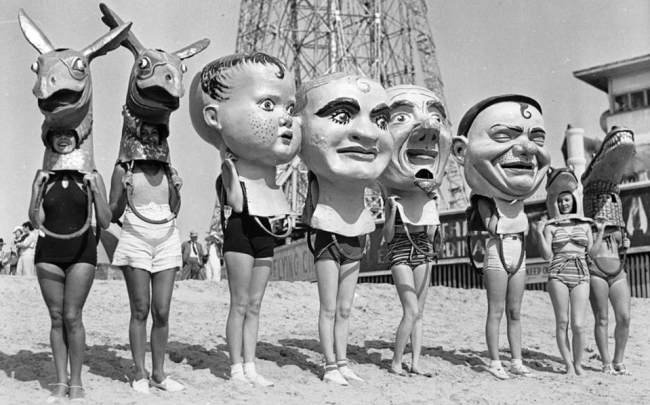
 that are going to be 14-15 stories high. That architecture is so different from what we’re used to, and the way we see L.A. is going to be changing in the next few years. I’m not for the Millennium project. I’m sorry, I’m just not for it. I think they’re too big. They’re too tall. I don’t like the way it’s going to change the Hollywood skyline. I mean, sandwiched right between them is the Capitol Records building, which is going to dwarf it. You know, it’s not going to be as glorious as when it stood on its own, like that.
that are going to be 14-15 stories high. That architecture is so different from what we’re used to, and the way we see L.A. is going to be changing in the next few years. I’m not for the Millennium project. I’m sorry, I’m just not for it. I think they’re too big. They’re too tall. I don’t like the way it’s going to change the Hollywood skyline. I mean, sandwiched right between them is the Capitol Records building, which is going to dwarf it. You know, it’s not going to be as glorious as when it stood on its own, like that. There are several that stand out to me that were taken away from us. I’m very upset about the
There are several that stand out to me that were taken away from us. I’m very upset about the 

 They’re checking out the Biltmore Hotel, which is so beautiful and has been restored. Union Station is classic, classic vintage L.A. And Olvera Street, right across the way, is just as popular as it’s ever been. So I’m pushing people to go downtown.
They’re checking out the Biltmore Hotel, which is so beautiful and has been restored. Union Station is classic, classic vintage L.A. And Olvera Street, right across the way, is just as popular as it’s ever been. So I’m pushing people to go downtown. I freelance TV work. So this past year, I got to produce two episodes of a local show out here called
I freelance TV work. So this past year, I got to produce two episodes of a local show out here called  I worship that movie. I love locations. I love that movie, because it shows where everything was filmed. I try to keep VLA very fresh. I try not to post the obvious posts, the obvious music, the obvious buildings. I try to think outside the box a little bit. Of course, I get amazing submissions from people. Some of those photos have never been published, or seen before. I get most excited about that.
I worship that movie. I love locations. I love that movie, because it shows where everything was filmed. I try to keep VLA very fresh. I try not to post the obvious posts, the obvious music, the obvious buildings. I try to think outside the box a little bit. Of course, I get amazing submissions from people. Some of those photos have never been published, or seen before. I get most excited about that.  my own Vintage L.A.documentary. But I’m plucking my stories right from the pages of VLA. Because those stories that are coming out of there need to be preserved. And I think film is the best way to do it. The only sad thing about the Facebook page — and maybe they’ll change it in the future — is you can’t really search for an old post. So if somebody remembers a post from last year, it’s very hard to go back on the page and find it. You know, there are stories that are there, but they’re buried. I’ve had the page three years now.
my own Vintage L.A.documentary. But I’m plucking my stories right from the pages of VLA. Because those stories that are coming out of there need to be preserved. And I think film is the best way to do it. The only sad thing about the Facebook page — and maybe they’ll change it in the future — is you can’t really search for an old post. So if somebody remembers a post from last year, it’s very hard to go back on the page and find it. You know, there are stories that are there, but they’re buried. I’ve had the page three years now.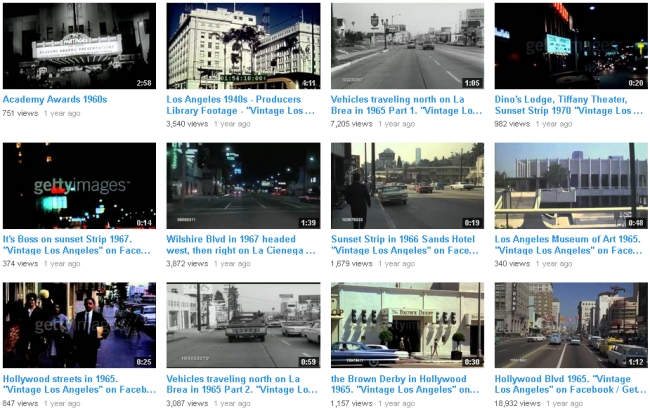
 That was our bible. I produced a show called Beverly Hills Babylon for Mysteries and Scandals. So it was definitely aBabylon-style show. We just got really lucky with that show. The timing was great, our host was just perfect, and we were shooting on the Boulevard. See, we shot every show on the Boulevard, and we had
That was our bible. I produced a show called Beverly Hills Babylon for Mysteries and Scandals. So it was definitely aBabylon-style show. We just got really lucky with that show. The timing was great, our host was just perfect, and we were shooting on the Boulevard. See, we shot every show on the Boulevard, and we had 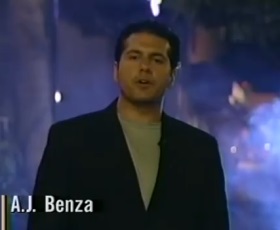 huge production team, and we did over 150 episodes. And the show got so popular, that they parodied A.J. on
huge production team, and we did over 150 episodes. And the show got so popular, that they parodied A.J. on I have two favorites. My father, the singer Al Martino, got his start because the singer
I have two favorites. My father, the singer Al Martino, got his start because the singer 
 When he first got signed to Capitol, he was living in L.A. in 1952 with
When he first got signed to Capitol, he was living in L.A. in 1952 with  My dad loved Los Angeles, and he was a big foodie. My dad hung out with a lot of restaurant guys. His go-to restaurants were Nicky Blair’s, Ah Fong’s, Mateo’s in Westwood, Marino’s, Martoni’s in Hollywood — which was really big for the music industry, with the people that went there. Because it was right by Capitol Records. Everybody knew everybody. Everyone knew the same agents, and knew the same managers. There weren’t that many labels back then. So everybody knew everyone that worked at all the record labels. Today there’s a million record labels. So you don’t really get to know as many people as you did back then. It was a real community. He loved L.A. He had a house in Philadelphia, but he spent most of his time in Los Angeles, and was with Capitol Records until the very end.
My dad loved Los Angeles, and he was a big foodie. My dad hung out with a lot of restaurant guys. His go-to restaurants were Nicky Blair’s, Ah Fong’s, Mateo’s in Westwood, Marino’s, Martoni’s in Hollywood — which was really big for the music industry, with the people that went there. Because it was right by Capitol Records. Everybody knew everybody. Everyone knew the same agents, and knew the same managers. There weren’t that many labels back then. So everybody knew everyone that worked at all the record labels. Today there’s a million record labels. So you don’t really get to know as many people as you did back then. It was a real community. He loved L.A. He had a house in Philadelphia, but he spent most of his time in Los Angeles, and was with Capitol Records until the very end. British chart ever charted, and he’s in The Guinness Book of World Records for that. And then when he came back to America,
British chart ever charted, and he’s in The Guinness Book of World Records for that. And then when he came back to America, 













